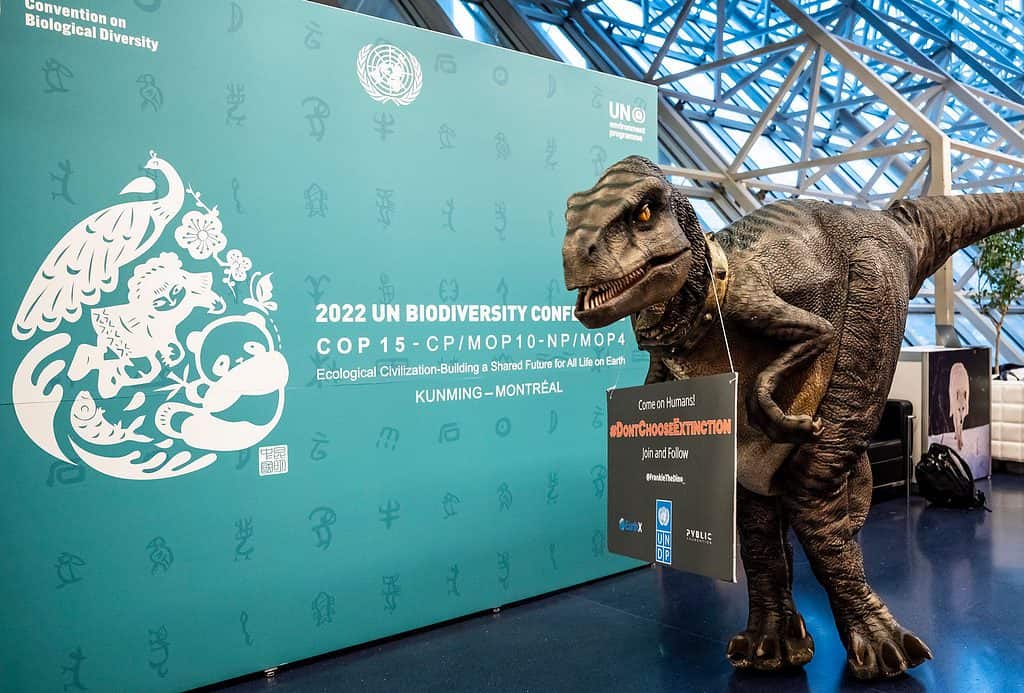The biodiversity on Earth is in trouble because of our activity.
Even if we act now and take serious conservation action, a full recovery of the natural world will take many decades — but it can be achieved if we set ambitious targets and implement them as quickly as possible. But we’re not really doing that. Over 500 scientists from different countries signed an open letter calling on governments to take action and agree to a global treaty on biodiversity deal. World governments are currently negotiating this type of deal, but can it really happen?

“Act now to begin reversing biodiversity loss by 2030,” is the title of the open letter. It was started by E.J. Milner-Gulland, biodiversity professor at the University of Oxford, Mike Marrett, Science and Conservation Director at WWF UK, and David Obura, director of CORDIO in East Africa, and signed by 530 scientists from 52 countries.
The letter replies to a news article published last week, suggesting that halting and reversing biodiversity loss by 2030 (the goal now discussed in the new agreement) is unrealistic and unachievable. While the article suggests targets shouldn’t be time-bound, the scientists believe that’s a mistake, asking for ambitious action on nature.
“Recovery to the point at which humanity can prosper on a healthy planet, with the key underpinning ecosystem functions operational, is achievable,” the researchers wrote. “Diluting or delaying targets and actions within the biodiversity framework, or removing the need for them to be time-bound, would be deeply counterproductive.”
A new biodiversity agreement
The Paris Climate Agreement is far from perfect — but it can be useful. It set up clear, tangible objectives, both globally, and nationally. Setting up a similar agreement for biodiversity could galvanize a new wave of support and trigger a shift in conservation momentum.
In Montreal, governments have been negotiating just this for about a week now. The previous treaty, called the Aichi Targets, finished in 2020 but governments failed to deliver on almost every target. Now, there’s an expectation over signing on to a more ambitious deal, but differences still remain.
The agreement, now on draft, lays out four long-term biodiversity goals for 2050 and 23 specific “action targets” to be completed by 2030. The latter includes eight targets to protect biodiversity and five focused on making sure humans use nature sustainably and share its benefits equitably. The remainder focuses on tools to achieve those targets.
One of the biggest news that could come out of the text would be a consensus on what’s called the “30 by 30” target. It asks countries to commit to protecting 30% of the world’s land and sea by 2030. A goal to halt and reverse biodiversity loss by 2050 is also on the table. This would mean enhancing ecosystems and tackling extinctions.
In their statement, the scientists argued it’s possible to reach a global inflection point well before 2050, and start reversing damage past that point, at least for some aspects of biodiversity. However, such an outcome can’t be achieved with localized conservation measures alone, no matter how much finance is mobilized. The legal and policy framework has to be changed, and a rapid turnaround requires action on the drivers of biodiversity loss, they argued.
The biggest driver is how we use the land and the sea. This includes the conversion of land covers such as forests and wetlands for agricultural and urban uses. Over 400 million hectares of forest have been lost since 1990. Ecosystems are also challenged by climate change, pollution, direct exploitation of natural resources, and invasive species.
The scientists asked governments to commit to halting and starting to reverse biodiversity loss by 2030 and set the world on a pathway to recovery where ecosystems can provide the functions that people need. There’s a moral obligation to do so, it makes scientific sense and is achievable – only if we act now, and act decisively.
“It’s vital to agree on the 2050 Goals and 2030 Targets related to conservation actions at CoP15. However, we will not succeed without putting as much effort into the goals and targets relating to the fundamental drivers of ecosystem destruction and biodiversity loss, including making our supply chains resilient and sustainable,” they wrote.
The full letter can be read here.


